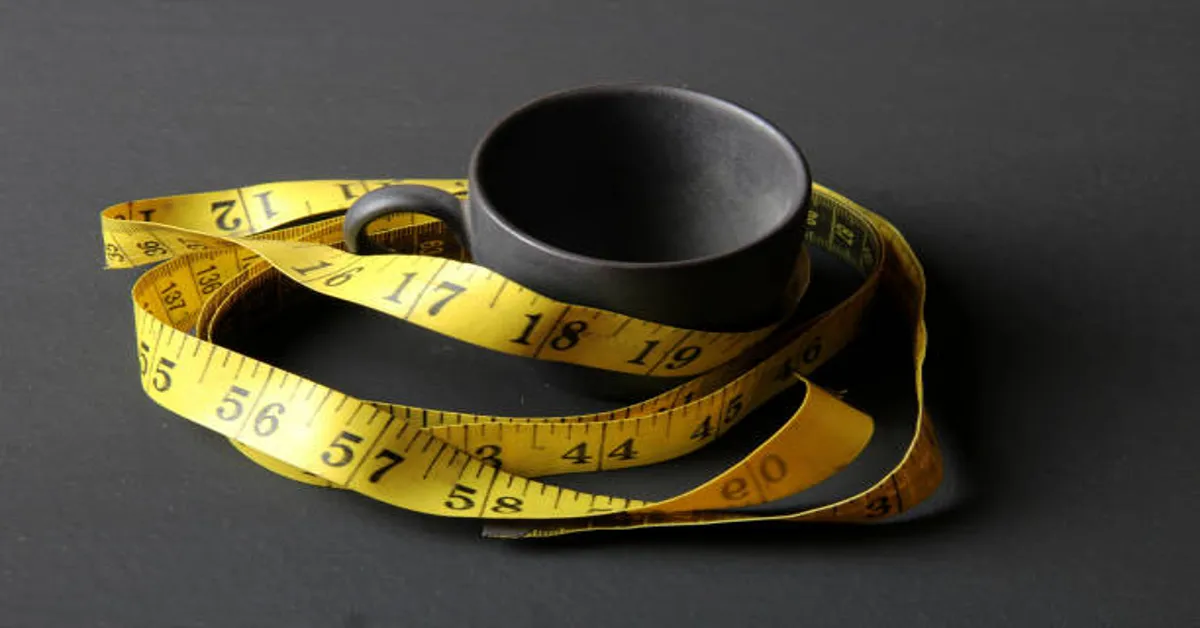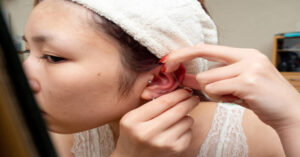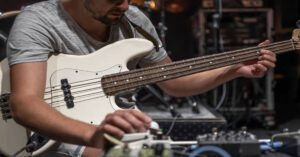When discussing bra sizes, most people focus primarily on the letter, but a bra size is more than just a single alphabet. The C cup size is often considered a balanced and versatile measurement that suits many body types. Whether you’re shopping for your first bra, adjusting to a size change, or simply curious about how a C cup compares to other cup sizes, understanding the specifics can make a huge difference in comfort, posture, and confidence.
This article provides a thorough exploration of C cup size, from how it is measured, to common fit concerns, styling tips, and health considerations. We will also cover variations across brands, how cup volume changes with band size, and practical advice for everyday wear.
1. What Does C Cup Size Mean?
A cup size represents the difference between the measurement around your bust at its fullest point and the measurement directly under your bust (the band size). The letter “C” refers to a specific range in this difference.
In most standard sizing systems:
- A cup → ~1 inch difference
- B cup → ~2 inch difference
- C cup → ~3 inch difference
This means if your bust measurement is 3 inches larger than your band measurement, you are generally considered a C cup.
However, cup sizes are relative. A 34C and a 38C have different cup volumes despite both being labeled “C” — this is known as sister sizing.
2. How to Measure for a C Cup Size
Accurate measurement is the foundation of a good fit. Here’s the standard method for determining if you wear a C cup:
| Step | What to Do | Purpose |
|---|---|---|
| 1. Measure Band Size | Wrap a soft tape measure snugly under your bust. Round to the nearest even number. | This is your band size (e.g., 34, 36). |
| 2. Measure Bust Size | Measure around the fullest part of your bust, keeping tape parallel to the floor. | This is your bust measurement. |
| 3. Calculate Difference | Subtract band size from bust size. | Difference determines cup letter. |
| 4. Identify Cup | 3-inch difference = C cup (in most US/UK sizing). | Confirms cup letter. |
Example:
- Band measurement: 34 inches
- Bust measurement: 37 inches
- Difference: 37 – 34 = 3 inches → C cup
3. C Cup Size in Different Sizing Systems
Bra sizes are not globally standardized. A C cup in one country may differ in volume from a C cup elsewhere. Below is a comparison table:
| Region/System | Cup Size Equivalent for “C” | Notes |
|---|---|---|
| US/UK | 3-inch bust-band difference | Most common sizing reference |
| EU | D cup (one step higher than US/UK) | Uses double letters differently |
| AU/NZ | C cup same as US/UK | Band sizes may differ slightly |
| Japan | D cup equivalent | Sizing shifts one letter higher |
4. Visual and Proportional Appearance of a C Cup
The appearance of a C cup can vary dramatically depending on:
- Band size: Smaller bands make the cup appear larger; larger bands make it look smaller.
- Breast shape: Round, teardrop, side-set, or full-on-top shapes affect how the cup looks in clothing.
- Body proportions: Height, shoulder width, and torso length influence overall appearance.
For example:
- A 30C may look modest and compact.
- A 38C will have a visibly larger volume because of the larger frame.
5. C Cup Volume in Sister Sizes
Cup size is not absolute — it changes with the band. Sister sizing helps when adjusting for comfort:
| Same Cup Volume As | Example Starting Size: 34C |
|---|---|
| One Band Down, One Cup Up | 32D |
| Original Size | 34C |
| One Band Up, One Cup Down | 36B |
This means a 34C cup holds the same volume as a 32D or a 36B, just on different band sizes.
6. Common Fit Issues with C Cup Bras
Even when wearing the correct size, C cup wearers may encounter fit challenges:
- Gapping: Extra space between the cup and breast (often due to shape mismatch).
- Spillage: Breast tissue overflowing the cup edge (usually from too small a cup or wrong bra style).
- Band riding up: Band too loose; reduces support and shifts weight to straps.
- Strap dig-in: Straps bearing too much load instead of the band.
- Center gore not lying flat: Sign of a too-small cup or incompatible shape.
7. Choosing the Right Bra Style for C Cup Size
Different bra designs suit different needs for C cup wearers:
| Style | Best For | Benefits |
|---|---|---|
| T-Shirt Bra | Everyday wear | Smooth under clothing, moderate coverage |
| Balconette | Wide-set breasts | Lifts and opens neckline |
| Full Coverage | Maximum support | Distributes weight evenly |
| Plunge Bra | Low necklines | Creates cleavage, works with deep V tops |
| Sports Bra | Exercise | Minimizes bounce, protects ligaments |
8. Clothing Styles That Complement a C Cup
A C cup size is often considered versatile for fashion. It can work with most necklines and silhouettes, but some styles enhance its natural proportion:
- Wrap dresses and tops: Accentuate curves without exaggeration.
- Scoop and square necklines: Balance the bust with shoulders.
- Button-down shirts with darts: Avoid pulling at the chest.
- Structured blazers: Offer clean lines while accommodating the bust.
9. Health Considerations for C Cup Wearers
While C cup breasts are often considered moderate in size, poor bra fit or posture can still cause issues:
- Back, shoulder, and neck discomfort: From improper support.
- Skin irritation: From straps or bands rubbing.
- Premature sagging: Due to insufficient support over time.
- Exercise strain: Inadequate sports bra can lead to ligament damage.
Tip: Rotate multiple bras, replace worn-out ones every 6–12 months, and choose high-quality fabrics.
10. C Cup During Life Changes
Breast size is not static — weight changes, hormones, and life stages influence measurements:
| Life Event | Common Impact on Size |
|---|---|
| Pregnancy | Often increase 1–2 cup sizes |
| Breastfeeding | Size fluctuates daily |
| Weight Loss/Gain | Breasts may shrink or grow depending on fat tissue change |
| Menopause | Hormonal changes can alter size and firmness |
11. Bust-to-Waist Ratio and C Cup Perception
A C cup may appear larger or smaller depending on waist size. For example:
| Band Size | Waist Size | Visual Effect |
|---|---|---|
| 30C | 24″ waist | More pronounced bust contrast |
| 38C | 34″ waist | Bust appears proportionate to frame |
This explains why celebrity or fashion descriptions of cup size can look inconsistent.
12. Myths About C Cup Size
- Myth 1: C cup is “average everywhere” — In reality, average cup size varies globally.
- Myth 2: C cup looks the same on all bodies — Body shape, height, and posture affect appearance.
- Myth 3: Once a C cup, always a C cup — Hormonal and lifestyle changes can alter size.
13. Care and Maintenance of C Cup Bras
To maintain shape and elasticity:
- Hand wash or use a lingerie bag in a gentle cycle.
- Air dry — avoid heat that breaks down elastic fibers.
- Store bras with cups upright, not folded into each other.
14. Quick C Cup Reference Table
| Measurement Difference (Bust – Band) | US Cup Size | UK Cup Size | EU Cup Size |
|---|---|---|---|
| ~3 inches | C | C | D |
Conclusion
The C cup size represents a versatile middle ground in bra sizing, offering both comfort and style flexibility for many wearers. Understanding its measurement, variations across systems, fit challenges, and best styling practices ensures not only a better look but also healthier support. Whether you wear a C cup currently or are transitioning into it, the key to confidence is knowing your body and choosing bras that fit your shape, lifestyle, and personal style.
ALSO READ: Quanto Basta Online – Complete Guide to Meaning, Use & Culture
FAQs
1. Is C cup considered large or small?
It is generally considered a medium size, but appearance depends on band size and body proportions.
2. Can a C cup look bigger on smaller frames?
Yes, a C cup on a petite frame may appear more prominent than the same cup on a broader frame.
3. What’s the difference between 34C and 36C?
The cup letter is the same, but 36C has a larger cup volume due to the bigger band.
4. How often should C cup bras be replaced?
Every 6–12 months or when the band loses elasticity or cups lose shape.
5. Do all brands size C cups the same?
No, sizing varies by brand and country; always try on before buying or check their size charts.









